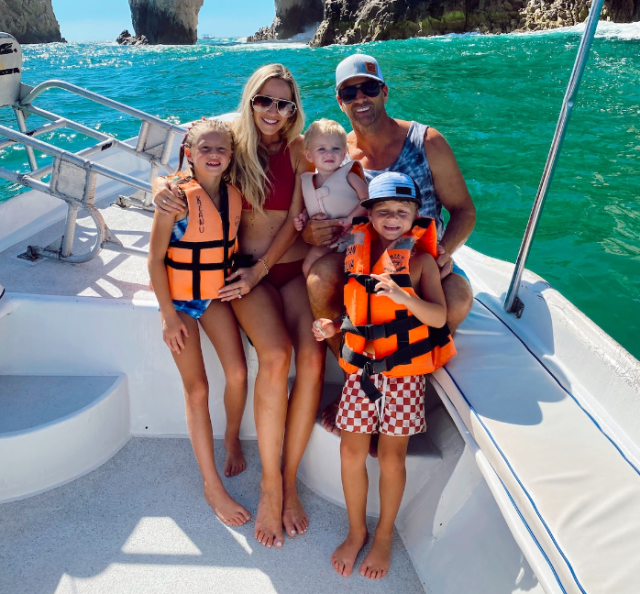Sailing as a family can be an enriching and fun experience, but when it comes to bringing children on board, it is essential to take extra measures to ensure their well-being and enjoyment. This article provides a detailed guide with key recommendations and practices to keep children safe and happy during a boat trip.
Preparations Before Sailing
1. Safety Equipment
Lifevest
Safety starts with the right equipment. Children should wear life jackets that fit correctly for their size and weight. These vests must comply with current safety regulations and be periodically inspected to ensure that they are in good condition.
First aid kit
A complete first aid kit is essential. Be sure to include bandages, antiseptics, tweezers, scissors, motion sickness medications, and any other medications children may need. Additionally, it is helpful to carry a first aid guide for specific emergencies.
Solar protection
Protection from the sun is crucial. Bring plenty of broad-spectrum, waterproof sunscreen, wide-brimmed hats, UV-protecting sunglasses, and light but long-sleeved clothing to avoid sunburn. Children have more sensitive skin and burn easily, so be sure to reapply sunscreen every two hours.
2. Education and Standards
Basic Safety Rules
Before boarding, clearly establish and explain safety rules to children. These may include:
- Do not run on the boat to avoid falls.
- Always wear a life jacket.
- Do not approach the edges without supervision.
- Inform an adult if you feel dizzy or uncomfortable.
Emergency Simulation
Carrying out emergency simulations can be very useful. It teaches children how to act if someone falls into the water, how to use safety equipment and what the action plan is in case of an emergency. These practices will help reduce panic and increase effectiveness in real situations.
3. Preparation of the Itinerary
Route Planning
Choose routes that are suitable for children, avoiding very rough waters or long routes that may be boring or uncomfortable. Consider sailing close to shore to make regular stops and explore new areas.
Frequent Stops
Plan stops at safe and attractive places where children can disembark, play and explore. This gives them a break from the movement of the boat and allows them to enjoy the experience more.

You may also be interested in: Safety recommendations at sea
During Navigation
1. Constant Supervision
Permanent Surveillance
An adult must always be supervising children. Constant vigilance is essential to prevent accidents. Make sure the children are always in sight and that someone is specifically assigned to this task at all times.
Designation of Responsibilities
Divide responsibilities among the adults on board. Assign each one a specific role to ensure that all aspects of children's safety and well-being are covered.
2. Activities and Entertainment
Games and toys
Bring games and toys that are safe to use on the boat. Floating toys, portable board games, and activity books are great options. Avoid small toys that can be easily lost or pose a choking hazard.
Nature Observation
Encourages the observation of nature. Provide binoculars and bird or marine wildlife guides so children can learn and enjoy their surroundings. Not only will this keep them entertained, but it will also teach them to appreciate wildlife and the marine environment.
Interactive Activities
Organize interactive activities such as fishing (if safe and appropriate), landscape drawing, or learning about basic navigation. These activities can be educational and entertaining, keeping children busy and happy.
3. Comfort and Well-being
Hydration and Nutrition
It is important to keep children well hydrated and fed. Bring enough drinking water and healthy snacks. Avoid heavy or greasy foods that may contribute to dizziness. Fruit, light sandwiches, and crackers are good options.
Rest Areas
Create comfortable areas where children can rest or take a nap if necessary. Pillows, blankets and cushions can help create a cozy and comfortable space for them.
Appropriate Dress
Dress children in clothing appropriate for the weather, including extra layers if it's cold or raincoats if there's a chance of rain. It's also helpful to bring spare clothes in case they get wet.

You may also be interested in: Tips for renting a yacht
Upon Returning to Port
1. Evaluation and Feedback
Post-Navigation Discussion
Talk to the children about their experience. Ask them what they liked, what they didn't like, and what they would like to do next time. This feedback is valuable for improving future outings.
Security Assessment
Review any incidents or situations that may have been dangerous and discuss them with the children to improve safety on future outings. Constant evaluation helps prevent future problems and create a safer environment.
2. Equipment Maintenance
Equipment Review
Inspect all safety equipment and replace any items that are damaged or worn. Make sure everything is in perfect condition for the next outing.
Cleaning and Storage
Clean and properly store all items used during navigation. This includes life jackets, toys and any other equipment. Keeping everything clean and in good condition ensures its durability and optimal functioning.
Additional Tips
Dizziness Management
Seasickness is common in children and can ruin a boating experience. To manage motion sickness:
- Preventive Medications: Consult a doctor about motion sickness medications suitable for children.
- Stay Hydrated: Make sure children drink enough water.
- Position on the Boat: Keep children in a central part of the boat where movement is less noticeable.
- Look at the Horizon: Encourage children to look at the horizon to stabilize their balance.

You may also be interested in: Avoid seasickness on the high seas
Continuous training
Consider enrolling children in water safety or boating courses so they can gain additional skills and knowledge that will be useful to them. These courses may be offered by local organizations or sailing schools.
Communication
Make sure you have functional means of communication in case of emergency, such as VHF radios and cell phones. Teach children how to ask for help if necessary and make sure they know who to turn to in an emergency.
Keeping children happy and safe on a boat requires preparation, constant vigilance, and a proactive attitude. By following these tips, you can ensure that everyone in the family has an enjoyable and memorable experience on the water, creating positive memories and fostering a love of boating from a young age.
We invite you to take a look at other articles at: https://yate.co/es/blog


